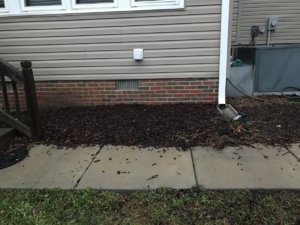flowerbug
Garden Master
...
Do people till cover crops, or just shovel them under? (I'm purchasing a tiller.)
i'm primarily a natural gardener and try to keep things as simple as possible. i've found that tilling makes more issues than it solves.
note that you are going from lawn to vegetable gardens. this will not be weed free and the more bare dirt you have and the edge along the lawn, even if done properly will be a source of weed seeds.
if you put an edge down in the ground a ways (depends upon your grass species you have in that area as to how deep you need to go) that will help keep the grass roots out but it does not keep the spray from the lawnmower, wind, rain, etc. from happening. if you mulch in a few feet along the edge (we use a few layers of cardboard to start and then top it off with mulch of any kind we can come up with). this will smother any remaining grasses and weeds there and gives a good barrier. you can also more easily get weeds out of the mulch if they happen than trying to get them out of the ground... and best of all it doesn't disturb the soil underneath which has the grass and weed seeds in there. you may need to do this more than once but it isn't that hard to do. cardboard is often free. use the plain kinds with the less ink on them as possible, black ink is ok (colorized and plastic coated isn't worth it - i don't use that stuff).
i'm pretty opinionated on the topic of tilling.
at present if i need a whole garden done i dig it by hand with a shovel. my body needs the exercise and i have the time. we also smother weedy spaces and perennial gardens with cardboard and wood chips which will decay and then that humus can be used in vegetable gardens.
for the existing vegetable gardens we have them pretty well under control. that doesn't mean they are weed free, but what it does mean is that i don't have to dig/till a whole garden. i can scrape the surface clean with a scuffle/strap hoe and then leave them on the surface to dry out. eventually the worms get them taken care of. at the end of a season i dig a small area of the garden to bury garden debris so i'm not disturbing the whole garden each season. this way the soil community isn't disturbed (worms and other creatures that much).
i do have some wilder gardens where i'm trying different things out. weeds happen in there. they can be chaotic, but i consider them more interesting and fun to learn from and play around with. Mom hates 'em. she likes bare dirt. i like diversity. we are like yin and yang, back and forth, etc.
you can see our gardens via http://www.anthive.com/
Last edited:


